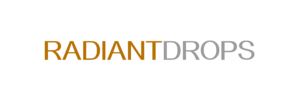Question:
What is hijaamah (cupping) and how do you perform it?
Answer:
Praise be to Allah.
The word hijaamah (cupping) comes for the word hajm which means sucking, as in the phrase hajama al-sabiy thadya ummihi (the infant suckled his mothers breast). Al-Hajjaam means the cupper, hijaamah is the profession of cupping, and the word mihjam is used to describe the vessel in which the blood is collected and the lancet used by the cupper. (See Lisaan al-Arab).
In fiqh terminology the word hijaamah is applied by some scholars to the extraction of blood from the nape of the neck by means of cupping after making an incision with the lancet. Al-Zarqaani stated that cupping is not limited to the nape of the neck, rather it may be done on any part of the body. This was also the view of al-Khattaabi.
In conclusion, hijaam refers to the extraction of blood from the body by means of cupping using a suitable vessel or whatever modern equipment serves the same purpose.
Cupping was known since ancient times. It was known to the Chinese, the Babylonians and the Pharaohs. Their relics and carved images indicate that they used cupping to treat some diseases. At first they used metal cups or bulls horns, from which they would remove the air by sucking it out after placing the cup on the skin. Then they used glass cups from which they would remove the air by burning a piece of cotton or wool inside the cup.
Virtues of cupping:
Al-Bukhaari narrated in his Saheeh (5269) from Saeed ibn Jubayr from Ibn Abbaas (may Allah be pleased with him) that the Prophet(peace and blessings of Allah be upon him) said:
Healing is in three things: drinking honey, the incision of a cupper, and cauterizing with fire, but I forbid my ummah to use cauterizing.
Al-Bukhaari (5263) and Muslim (2952) narrated that Anas ibn Maalik was asked about the earnings of the cupper, and he said: The Messenger of Allah (peace and blessings of Allah be upon him) was treated with cupping by Abu Taybah. He ordered that he should be given two saa of food, and he spoke with his masters so that they reduced what they used to take from his earnings. And he said:
The best medicine with which you treat yourselves is cupping, or it is one of the best of your medicines.
It was narrated that Jaabir ibn Abd-Allah (may Allah be pleased with him) said: I heard the Messenger of Allah (peace and blessings of Allah be upon him) say:
If there is anything good in the medicines with which you treat yourselves, it is in the incision of the cupper, or a drink of honey or cauterization with fire, but I do not like to be cauterized. (Narrated by al-Bukhaari, 6583; Muslim, 2205).
Benefits of cupping:
Cupping has real benefits in treating many diseases, past and present. The diseases which have been treated by cupping and for which it has been of benefit by Allahs Leave include the following:
1- Circulatory diseases
2- Treating blood pressure and infection of the heart muscle
3- Diseases of the chest and trachea
4- Headache and pains in the eyes
5- Pain in the neck and stomach, and rheumatic pain in the muscles
6- Some diseases of the heart and chest, and pain in the joints
In addition, cupping may offer a unique treatment which may reduce pain, and it does not have any side-effects. For more information on the benefits of cupping see Zaad al-Maaad by Ibn al-Qayyim, 4/52, and al-Hijaamah: Ahkaamuha wa Fawaaiduha by Ibraaheem al-Haazimi.
How cupping is done:
The mouth of the cupping vessel (nowadays they use glass vessels) is placed on the skin at the site chosen for cupping. Then the cupper rarefies the air inside the vessel by burning a small piece of paper or cotton inside the vessel, so that the mouth of the vessel will cling to the skin. Sometimes a machine is used instead of the method described above. The vessel clings to the skin and is left for a period of three to ten minutes. Then it is lifted off and a very small incision is made in the skin using a clean sharp instrument such as a razor blade or the like. Then the cup is put back in the same manner as described above, until it is filled with the bad blood that comes out of the veins. Then it is taken off, and may be put back once more if needed. When it is finished and the cup is taken away, a dry dressing is placed over the site of the incision. (See Mabaahith fil-Jaraahah al-Sughra wal-Takhdeer by Prof. Dr. Nazmi al-Qabbaani).
Before ending we should point out that no one should undertake cupping except one who can do it well, because of the harm that may result if it is done by one who is incompetent. And Allah knows best.
Footnote
Taken from islamqa.info/en
(NOTE: If you want to build a strong and powerful relationship with Allah, check out Islamia TV, where you can watch Islamic speakers from across the globe deliver inspiring and motivational courses. Learn more at www.islamia.tv.)
